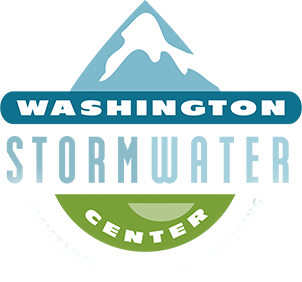WSDOT Modified Media Filter Drain
Description
The Washington State Department of Transportation (WSDOT) Modified Media Filter Drain (MMFD) is a modification of the standard Media Filter Drain BMP. A standard media filter drain consists of three components: a vegetation-free gravel zone to assure sheet flow from the pavement and to provide initial infiltration losses; a three-foot-wide grass strip to provide pretreatment; and media filtration. The MMFD provides an end-of-pipe alternative to the standard media filter drain, using a detention pond or vault in place of the grass strip as pretreatment and vegetation-free gravel zone as initial infiltration losses. A flow spreader is used downstream of the detention pond or vault to return the flow to sheet flow before dispersing it over the media filtration.
Purpose
WSDOT must use proven stormwater treatment BMPs when required by their municipal stormwater permit. These BMPs must either be included in the Highway Runoff Manual or approved through TAPE. One of the few BMPs in the Highway Runoff Manual that is approved for enhanced (dissolved metals) treatment is the Media Filter Drain. This BMP, however, is often difficult to install due to space constraints along the immediately adjacent right-of-way or retaining walls that don’t allow for sheet flow.
WSDOT designed the MMFD as an end-of-pipe alternative to the standard media filter drain, allowing for its installation in areas that a standard Media Filter Drain may not work. Because the MMFD was not listed in the Highway Runoff Manual, WSDOT had to pursue approval through the TAPE program. The MMFD was evaluated between October 2011 and October 2012 and ultimately received a General Use Level Designation for Basic (TSS) and Enhanced (Dissolved Metals) Treatment.


